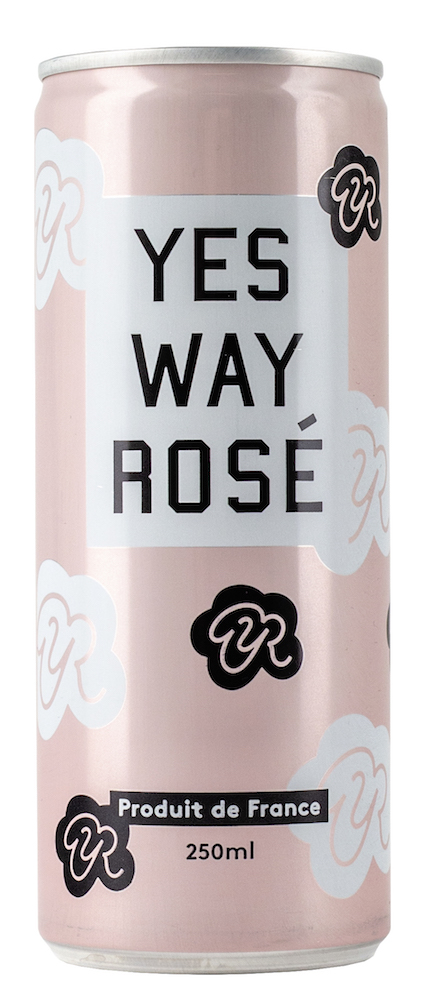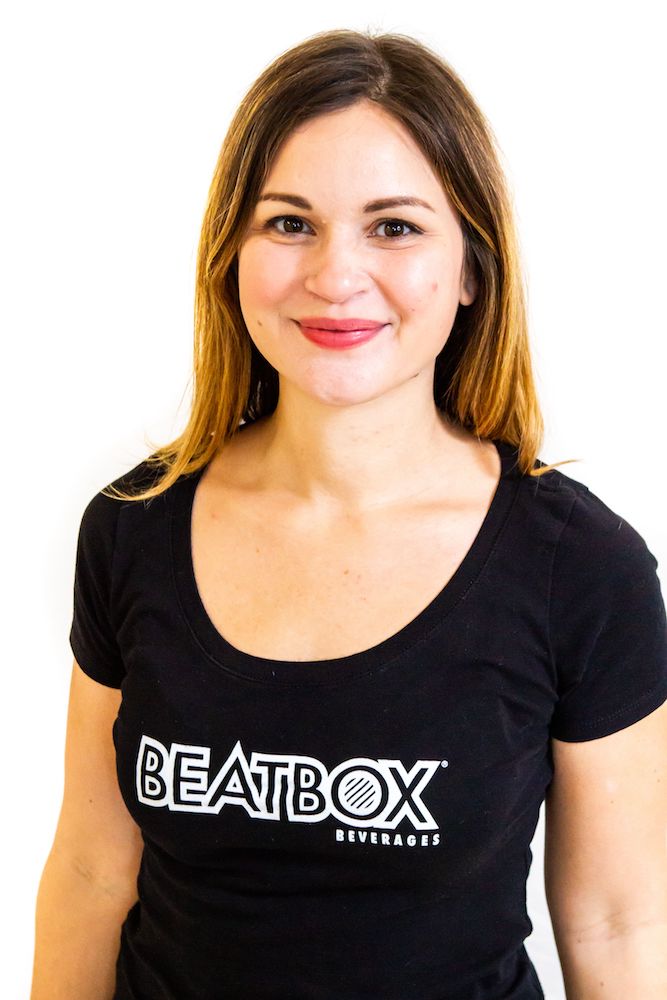The way we drink wine is changing.
More consumers today are on the go. Places where they want to drink — at parks, beaches, pools — do not always allow glass packaging. And people now also tend to drink better, but less. Opening an entire 750-ml. bottle of wine is no longer for everybody. Consumers want smaller or single-serve options.
People have also become more eco-conscious. Carbon footprints created by full-size wine bottles, especially when adding in their transportation from producer to wholesaler to retailer to consumer, is a cost against the environment that some drinkers now see as being too negative. These people prefer greener options (hence the simultaneous rise of organic and biodynamic vineyards) and will buy wines with eco-friendly packaging. This means lighter options like cans that are also easier to recycle.
Which has all led to the current wave of wines now available in boxes, cans and other formats that challenge long-established packaging norms. A younger consumer base looks at their products differently.
“With a new generation of consumers, winemakers have been able to shed some of the negative stereotypes that had plagued canned and boxed wine for years and prevented canned wine from really taking off, and boxed wine from growing into premium categories,” says Terry Lozoff, VP of Marketing for Latitude Beverage, whose portfolio includes the canned line Lila Wines.
Canned Craze
Among the leaders in this category is Union Wine Company of Oregon. They launched their first canned wine in 2013. Since then, the winemaker and the category have both enjoyed growth.
“Canned wine became the fastest growing segment in the U.S. in 2016, seeing triple-digit growth year after year,” says Union Wine Founder and Owner, Ryan Harms. “It has grown to become a $14-million industry, meaning it’s no longer just a trend, it’s a category.”
“When you look at what organizations like Whole Foods and Gallo are saying about cans and the investment they are making in canned wine, I feel like that is a strong indication that we have really just begun,” Harms adds.

For further proof of this becoming a permanent new category, look at how consumer trends play into the benefit of canned wine.
“As people today drink less beer and more wine, they desire more playful packaging,” says Erica Blumenthal, co-founder of Yes Way Rosé. The brand recently launched four-pack cans of rosé, available for $16.99 per pack. “People have already been drinking beer and soda, so they’re used to cans, which are less intimidating than a wine bottle.”
The category is all about accessibility and portability. It’s much easier to bring a 4-pack of canned wine on a hike, or to the pool or beach, than a 750-ml. glass bottle. And it’s also more legal: many outdoorsy places where younger LDA drinkers like to hang out do not permit glass products.
“Cans are really easy to throw in a bag and they’re not too heavy,” points out Yes Way Rosé Co-Founder Nikki Huganir.

Canned wines come in all sizes. Determining the ideal size is important for a brand.
“We had wanted to put our wine in 250-ml. cans, but our distributor suggested otherwise,” says Joan Kautz of Ironstone Vineyards, which is about to launch their Obsession Symphony wine brand in cans. “They said that buyers are pushing for 375-ml., because 250-ml. cans you have to sell in a 4-pack, whereas 375-ml. they can sell individually.”
So what is the ideal size?
“Researchers from Texas Tech University surveyed nearly 1,000 respondents ages 21 to 88, and found 250-ml. cans are the most popular size for consumers,” says Lozoff of Latitude Beverage. “For one, consumers want single-serve cans they can easily throw in their tote and bring to the beach, park, campsite or anywhere else glass is prohibited. And when they’re home, consumers like the option of cracking open a single can at a time. Aluminum cans are also easier to recycle than bottles, which appeals to a younger, more eco-minded generation.”
Boxed Wine
Boxed wine is not what it used to be. The days of cheap product poured from bottom-shelf boxes during college dorm parties has been replaced with more-premium options.
“Boxed wine has been around a long time,” recalls Daniel Posner of Grapes The Wine Company. “Certainly over the last 10-15 years, the quality of the wine going into the boxes has improved enough that every-day wine drinkers are happy to get a box, because now that they know they’re getting good quality.”

This change in consumer attitude has occurred thanks to pioneering boxed-wine brands like Bota Box and Black Box. (The latter recently exchanged hands as part of the 30 or so brands that Constellation Brands sold to E.&J. Gallo for $1.7 billion.) Both products are reliably high quality, shifting how people think of the category.
They have also created room for newer brands to experiment. For instance, products like Beatbox Beverages. This wine-based punch gained fame on “Shark Tank,” where it earned a $1-million investment from Mark Cuban (his largest at the time). After launching with 5-liter “party-in-a-box,” boom box-themed packages, the Austin, Texas-based brand recently expanded into 500-ml. single-serve containers priced between $2.99-$3.49 each.
Flavors include Blue Razzberry, Pink Lemonade and Fruit Punch. The brand’s website highlights the party lifestyle.
“When we started this company, most of the marketing and flavors in boxed wine were geared towards older drinkers,” says co-founder Aimy Steadman. “We wanted to make boxed wine for the next generation.”

Other Formats
Already, the next wave of wine products has emerged as alternative packaging evolves beyond boxes and cans. For example: the wine subscription services Vinebox and Usual.
Vinebox ships customers a box of nine single-serve wines, packaged in cylindrical 100-ml. glass containers, four times a year. Usual sends out 187-ml. bottles of wine in a chic triangular bottle.
“The level of quality in alternatively packaged wines has increased greatly in recent years, especially the last twelve months, but the optics are not there yet,” says Matt Dukes, CEO and co-founder of both subscription services. “You might feel bad pouring phenomenal wines out of a can during dinner, or at a party, where you’d be understandably accused of bringing cheap wine.”
“We’re bringing the experience along with the alternative wine packaging,” Dukes adds.
While neither brand is available at retail, Dukes can imagine a future where they’re also sold in stores.

Kegged wine has also become increasingly common on-premise, or at retail establishments that can offer by-the-glass pours. “Kegs are easy because of the whole bar phenomenon,” says Posner of Grapes The Wine Company. “Bars and restaurants are already equipped to handle kegs, and they save those businesses a lot of money. And the wine tastes just as fresh, while also being better environmentally.”
The movement towards smaller and alternative packaging has also benefitted existing formats. For 15-20 years, Cavit has offered 187-ml glass bottles of their wines, but in the last couple of years, these smaller versions have taken off, growing 15%.
“It took us all by surprise,” explains Hal Cashman, Cavit director of brand development. “Now that we’ve noticed it, we’re creating a bunch of tools to fuel that growth.” These include countertop racks for stores meant to be put by the register.
The brand also recently released its Cavit Limited Edition Rosé in 187-ml. four packs
Cavit had considered shifting their 187s from glass to plastic — since their being glass keeps them out of stadiums, golf courses and other outdoor venues — but the company wanted to maintain the image and feel of quality, Cashman explains, so it stuck with glass.
In general, he believes that the alternative packaging category will continue to grow. “I think that retailers have also noticed this as well,” Cashman says. “They are more open now to dedicating more counter and floor space.”

Format Obstacles
With new formats come new challenges. Traditional 750-ml. wine bottles still hold several advantages over newer, trendier alternatives. For one, there’s the shelf life issue.
“Glass bottles can be stored for many years (if not decades) because glass does not react chemically with wine. On the other hand, aluminum cans require a special lining because the acid in the wine erodes aluminum over time,” points out Brett Vankoski, Latitude Beverage wine director. “That’s why canned wine isn’t meant to be aged.”
And producers cannot cheat by using wines with less acidity.
“You need a good acidity in the wine you put in cans, because otherwise you cannot maintain the fresh flavors in the can,” explains Tom Merwin, co-owner of Muddy Boot Wine in Clarksburg, CA. “And if you’re not putting high-quality product into the can, then you’re really shooting yourself in the foot, because it doesn’t last as long.”
Muddy Boot benefits from having Bronco Wine as their national distributor. Merwin is able to package through Bronco Wine’s own canning line is an area where Bronco intends to invest further.
Other brands have harder times packaging their products. These formats are so new that the packaging facilities are still too few in number.
“It takes a $1-million machine to pack our products,” explains Steadman of BeatBox Beverages. “We don’t own our own facility, so we’re relying on the co-packing community. And there’s only a limited number of co-packers available. But the community is realizing this, so I’m hoping for a more robust co-packing community moving forward, given the demand.”
Another issue that some brands face is trying to package canned wine in Europe. The standard American 375-ml. can is a size that does not exist in Europe, so you’ll see brands instead put their wine into 250-ml. cans.
As for the future of the category itself, Harms of Union Wine Company — a pioneer of canned wine— predicts more good times ahead.
“The single-serve market’s growth is bringing new producers and products into the category, thus giving the consumer more choice, which I think is great,” he says. “I believe the category will continue to mature.”
Agreeing with him is Kin Mehra, founder and president of Latitude Beverage.
“Canned wine is a hot category, and will continue to grow in 2019,” Mehra says. “Distributors are seeing increased sales in large retail chains across the country, with retailers devoting more shelf space to canned wine. Early on, canned wine shared the shelf with other alternative packaging, but has grown and established a dedicated and more prominent location on shelves.”
Kyle Swartz is editor of Beverage Dynamics magazine. Reach him at kswartz@epgmediallc.com or on Twitter @kswartzz or Instagram @cheers_magazine. Read our recent piece Our Wine Panel Reviews Moscato.





If you’d like a FREE 50-page copy of the industry-leading report referenced in the article “Researchers from Texas Tech University surveyed nearly 1,000 respondents ages 21 to 88, and found 250-ml. cans are the most popular size for consumers,” says Lozoff of Latitude Beverage, drop us a line at http://www.WICresearch.com
[…] issue includes a cover story on Alternative Wine Packaging. The full line-up of features also […]
[…] Two Cheers for Canned Wine Why Wine Packaging has Evolved […]
[…] Peach Punch Punch is rolling out on shelves now and will be available to purchase online early next month. The punch comes in a 500-ml. single-serve resealable Tetra Pak. […]
[…] a look at how this alternative-packing RTD has caught on with consumers, we recently spoke with cofounders Amy Steadman, Brad Schultz and […]
[…] 2013, canned wine has become really popular because it’s kept up with the ongoing changes in consumers’ […]